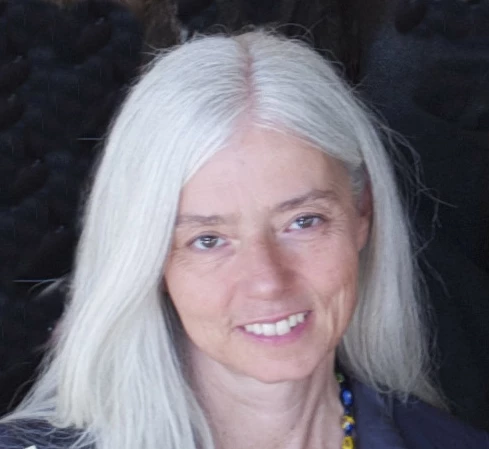Restorative Setu Bandha Sarvangasana (Bridge Pose): Relax and Replenish

Many of us are conditioned to believe that only fast-paced, kick-butt yoga can reap benefits. From the outside, Restorative yoga practice might look like just lying around on bolsters and blankets, but the truth is that it changes us at profound and subtle levels of being that a hurried yoga practice cannot reach.
A vigorous practice yields benefits, but Restorative practice gives us access to deeper levels of being, the gateways to a quiet mind. In the process, we are healed below the surface of our being, at the underlying spring of prana that feeds us.
Restorative Bridge Pose is a backbend. As a backbend, it opens the front body and supports the back body. The head position—neck flexed and head below the heart—activates the baroreflex, a reaction that suppresses the sympathetic (fight or flight) nervous system and moves us into the parasympathetic (rest and digest) side. On the parasympathetic side, we restore and replenish our energies.
How to Practice Restorative Bridge Pose

- To practice the Restorative Bridge Pose, gather five firm blankets or two yoga bolsters and one firm blanket. You can also use a combination of one bolster and three firm blankets. If you are using blankets, fold four of them, each one into a bolster size (about 12 inches wide by 36 to 40 inches long).
- Make two stacks of two blankets each. Place one stack about a foot or more from the head end of a Yoga mat. Place the other stack perpendicular to the first stack, parallel to the lengthwise sides of your mat, forming a T shape.
- If you are using bolsters, make a T shape with your bolsters, with the top of the T a foot or more from the head end of your mat.
- Roll the other blanket into a roll that’s approximately six to eight inches in diameter and place it at the bottom of the T. Sit on the stem of the T and lie back. Scoot back toward the top of the T until your shoulders come off the edge and the tops of your shoulders touch the floor. You should feel as if your ribcage is spilling off the edge of the blankets. Your head and neck should be relaxed and level.
- Now, stretch your legs out and allow your ankles to rest on the blanket roll. Rest your arms at your sides in whatever position is comfortable. You may want to cover your eyes with an eye bag. Settle in. Relax your breath. Allow your body to breathe naturally.
- Release the weight of your body into the pull of gravity. Do nothing. You can stay in Supported Bridge for as little as five minutes or as long as 30 minutes or more.
- When you are ready to leave the pose, roll gently onto your side and rest for a while. Then, push yourself up to a sitting position. Check-in with your body and mind. How do you feel?
Georgia O’Keefe famously said, “Nobody sees a flower—really—it is so small. It takes time. We haven’t time, and to see takes time, like to have a friend takes time.”
It is almost impossible to connect with the present when we are continually running. Slow down. Make a friend of your body. Give it time to replenish and restore itself.
Check out this helpful YogaUOnline article: Yoga for Headaches – Head Wraps & Restorative Poses.
 Charlotte Bell began practicing yoga in 1982 and began teaching in 1986. She was certified by B.K.S. Iyengar in 1989 following a trip to Pune. In 1986, she began practicing Insight Meditation with her mentors Pujari and Abhilasha Keays. Her asana classes blend mindfulness with physical movement. Charlotte writes a column for Catalyst Magazine, and is the author of two books: Mindful Yoga, Mindful Life and Yoga for Meditators, both published by Rodmell Press. She also edits the Hugger Mugger Yoga Products¹ blog and is a founding board member for GreenTREE Yoga, a non-profit that brings yoga to underserved populations. A lifelong musician, she plays oboe and English horn in the Salt Lake Symphony and the folk sextet Red Rock Rondo, whose 2010 PBS music special won two Emmys.
Charlotte Bell began practicing yoga in 1982 and began teaching in 1986. She was certified by B.K.S. Iyengar in 1989 following a trip to Pune. In 1986, she began practicing Insight Meditation with her mentors Pujari and Abhilasha Keays. Her asana classes blend mindfulness with physical movement. Charlotte writes a column for Catalyst Magazine, and is the author of two books: Mindful Yoga, Mindful Life and Yoga for Meditators, both published by Rodmell Press. She also edits the Hugger Mugger Yoga Products¹ blog and is a founding board member for GreenTREE Yoga, a non-profit that brings yoga to underserved populations. A lifelong musician, she plays oboe and English horn in the Salt Lake Symphony and the folk sextet Red Rock Rondo, whose 2010 PBS music special won two Emmys.



